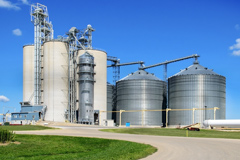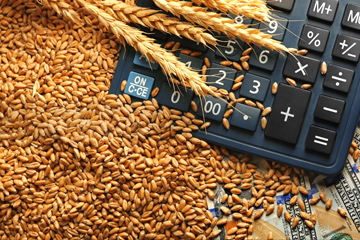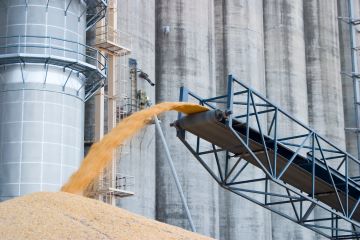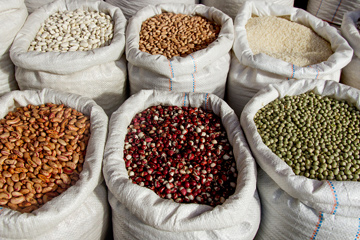Yes, it is illegal to transport noxious weeds and their propagating parts in Minnesota without a permit, unless you are transporting to a specific location for lawful disposal or destruction! Noxious weed propagating parts are structures that allow the plant to regenerate and spread. These include seeds, cuttings, buds, shoots, stems and root fragments. Minnesota Statute 18.82 prohibits the transport of listed prohibited and restricted noxious weed propagating parts without issuance of a special permit that can be obtained from the Minnesota Department of Agriculture (MDA) or the County Agricultural Inspector from the jurisdiction where the movement will occur. The permit is intended to ensure that the person requesting transport will take every measure necessary to avoid spreading any propagating parts while in route. Each permit also indicates how the propagating parts will be destroyed once they reach their destination. If the plants main mode of reproduction is by seed and has been removed prior to seed production, then it is legal to transport without a permit. You do not need a permit if you are transporting noxious weed propagating parts to a designated location for lawful disposal if you follow the conditions specified previously for containment during transport.
No. Disposal of noxious weeds into solid waste trash bins is against the law! Although it may seem easy for the average landowner to rid themselves of a few pesky noxious weeds growing on their property by adding them to their solid waste containers, it is actually against state law. Minnesota Statute 115A.931 prohibits placing yard waste into any municipal solid waste containers, at a disposal facility, or at a resource recovery facility for reasons other than composting or co-composting.
No. Disposal of noxious weeds into solid waste trash bins is against the law! Although it may seem easy for the average landowner to rid themselves of a few pesky noxious weeds growing on their property by adding them to their solid waste containers, it is actually against state law. Minnesota Statute 115A.931 prohibits placing yard waste into any municipal solid waste containers, at a disposal facility, or at a resource recovery facility for reasons other than composting or co-composting.
Due to the risk of noxious weed seeds surviving the composting process and potentially being spread to new areas in the resulting compost material, it is safer to allow noxious weed materials to decay naturally on site. If you feel that you must remove noxious weeds and their propagating parts from your property, compost sites regulated by the Minnesota Pollution Control Agency (MPCA) may be an alternative.
Currently there are over 100 yard waste facilities registered by MPCA throughout Minnesota. Noxious weed seeds and other propagating parts may not be completely destroyed during the composting process if the proper procedures are not followed. If you choose to dispose of noxious weeds at a yard waste site, look for sites that adhere to the national Seal of Testing Assurance standards approved by the U.S. Composting Council. These facilities work hard to ensure that the temperature and length of time restrictions are met. In addition to yard waste sites, there are several Source Separated Compost Facilities (SWCF) operating in the state that are regularly monitored by MPCA to ensure that compost is held at 131ºF for a minimum of 15 days. Visit the MPCA website to learn more about composting in Minnesota.
Due to the risk of noxious weed seeds surviving the composting process and potentially being spread to new areas in the resulting compost material, it is safer to allow noxious weed materials to decay naturally on site. If you feel that you must remove noxious weeds and their propagating parts from your property, compost sites regulated by the Minnesota Pollution Control Agency (MPCA) may be an alternative.
Currently there are over 100 yard waste facilities registered by MPCA throughout Minnesota. Noxious weed seeds and other propagating parts may not be completely destroyed during the composting process if the proper procedures are not followed. If you choose to dispose of noxious weeds at a yard waste site, look for sites that adhere to the national Seal of Testing Assurance standards approved by the U.S. Composting Council. These facilities work hard to ensure that the temperature and length of time restrictions are met. In addition to yard waste sites, there are several Source Separated Compost Facilities (SWCF) operating in the state that are regularly monitored by MPCA to ensure that compost is held at 131ºF for a minimum of 15 days. Visit the MPCA website to learn more about composting in Minnesota.
Beginning the week of February 24, the Minnesota Department of Agriculture (MDA), working with state government and industry partners, will begin sampling and testing raw cow’s milk for the H5N1 flu virus to identify where the virus is present, monitor trends, and prevent its spread to unaffected dairy herds and poultry flocks around the state.
“H5N1 is an emerging disease in dairy cattle, and conducting disease surveillance supports the state’s ability to effectively respond to outbreaks and limit the potential impact on the livestock and poultry industries, as well as on public health,” said MDA Commissioner Thom Petersen.
There is no concern for the safety of the public milk supply, as all milk sold in stores is pasteurized to kill bacteria and viruses, and pasteurization has been shown to effectively eliminate active H5N1 virus present in milk.
People and pets should not consume unpasteurized (raw) milk, raw milk cheeses, or raw or undercooked meat from animals with suspected or confirmed H5N1 virus infection. All raw dairy products may contain harmful bacteria, parasites, or viruses which can cause illness.
The MDA will order the testing of raw milk samples already collected from each of Minnesota’s approximately 1,600 dairy farms on a monthly basis. These routinely collected bulk milk samples, which are taken before the pasteurization process, will be sub-sampled by industry labs and sent for H5N1 testing to the Minnesota Veterinary Diagnostic Lab (MVDL) at the University of Minnesota.
When a sample analysis shows the presence of influenza virus, the Minnesota Board of Animal Health (BAH) will be notified to collect an additional verification sample to confirm the presence of the H5N1 virus on the identified farm. All non-negative samples will also be forwarded to the National Veterinary Diagnostic Laboratory in Ames, Iowa, for further confirmation and genetic typing. The BAH will also initiate a farm quarantine and disease investigation.
Any farm where H5N1 is confirmed will be quarantined for a minimum of 30 days, during which no livestock, poultry, cats, manure, waste milk, or carcasses can leave the farm without a movement permit from the BAH.
Milk from healthy animals can still be sold for pasteurization, as usual.
Before lifting the quarantine, a farm must have three consecutive negative bulk milk tank tests taken at least seven days apart, and complete management and biosecurity plans for preventing the spread of the virus. Case managers will help farms work through this process.
When H5N1 is confirmed in a herd, the Minnesota Department of Health (MDH) will request a list of people on the farm who were exposed to the infected herd. MDH workers will contact these individuals to give them the option to enroll in human health monitoring.
Human cases of H5N1 are rare, and to date no human cases have been found in Minnesota.
“Although we understand that people may be concerned about getting sick with H5N1, the risk to the general public remains low at this time,” said Dr. Ruth Lynfield, state epidemiologist and medical director at MDH. “People most at risk are those who have direct contact with infected or potentially infected animals and their environments.”
Symptoms of H5N1 in people can include red, itchy, watery eyes and/or cough, sore throat, and a fever.
This testing plan is part of the National Milk Testing Strategy announced in December by the U.S. Department of Agriculture Animal and Plant Health Inspection Service (USDA-APHIS), which requires sampling and testing of all raw cow milk for H5N1.
The MDA is working with the federal agency on funding for the testing.
USDA-APHIS is providing financial support to help dairy producers enhance biosecurity on their farms and follow the necessary response protocols if H5N1 is confirmed in their herd.
Anyone with questions about the testing plan can contact the MDA at TestingMilk.MDA@state.mn.us or visit the MDA website for more information.
###
Media Contacts
Larry Schumacher, MDA Communications
651-201-6629
Larry.Schumacher@state.mn.us
Michael Crusan, BAH Communications
651-201-6815
Michael.Crusan@state.mn.us
Amy Barrett, MDH Communications
651-201-4993
Amy.Barrett@state.mn.us
The Minnesota Department of Agriculture (MDA) is now accepting applications for the 2025 Agricultural Growth, Research, and Innovation (AGRI) Meat Education and Training (MEAT) Grant Program.
The grant helps Minnesota schools establish or enhance meat cutting and butchery training programs.
Applicants must be public or private schools or school districts in Minnesota that are seeking to establish or enhance meat cutting and butchery training for secondary students (Grades 6 through 12).
The MDA anticipates awarding approximately $225,000 using a competitive review process. Applicants may request a minimum of $5,000 and a maximum of $75,000 per project; up to 10% of each grant may be used for faculty training. Schools are not required to contribute matching funds.
The AGRI MEAT Grant application must be received by 4 p.m. on Tuesday, April 1, 2025, through the MDA’s online application system. Decisions are expected in early May.
Visit the AGRI Meat Education and Training (MEAT) Grant Program webpage for more information.
###
Media Contact
Allen Sommerfeld, MDA Communications
651-201-6185
Allen.Sommerfeld@state.mn.us





